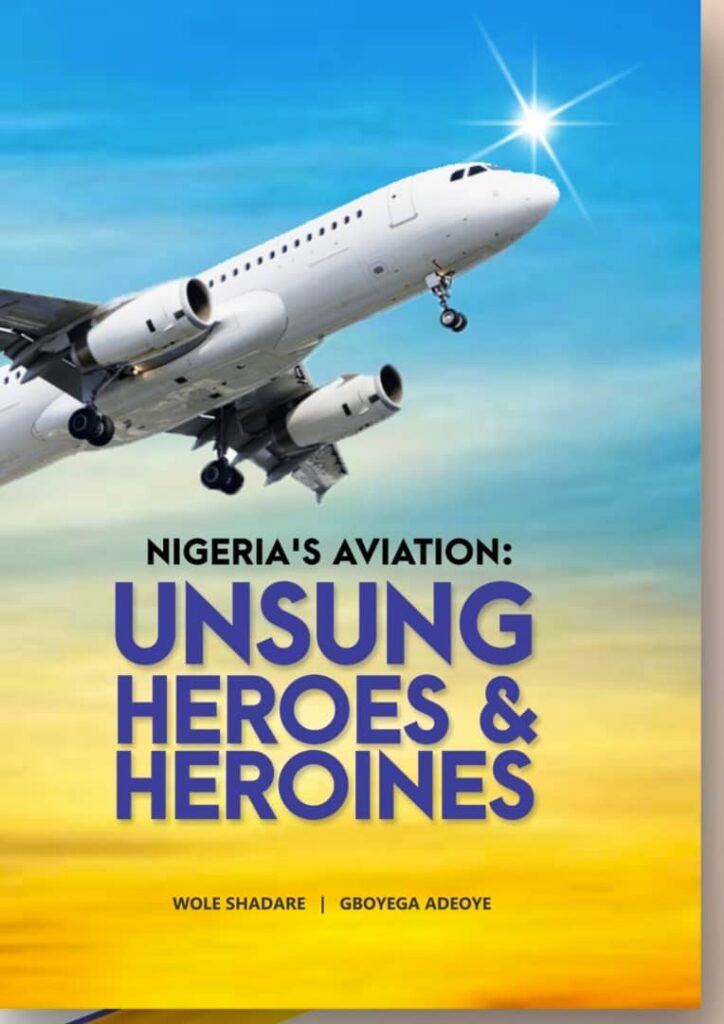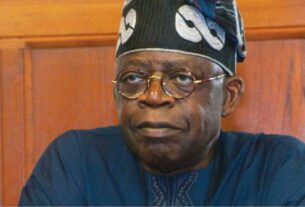Just like with the greatness of men, the greatness of books can also come in many shades, as the bard has observed “Some are born great, some achieve greatness and others have greatness thrust upon them”. There is a new book in town that in one day of existence has done more than most books and their authors can dream of doing in a lifetime. The book is written by two veteran journalists, Wole Shadare and Gboyega Adeoye. It is titled “Nigeria’s Aviation: Unsung Heroes and Heroines” and was presented to the public in Lagos on May 9, 2023.

In just one day of existence, Wole Shadare and Gboyega Adeoye’s book did not only generate a special request by public demand for an encore and continuation but also a movement with a plan. The day of the presentation of “Nigeria’s Aviation: Unsung Heroes and Heroines” was also a day of reunion for many leading and authoritative figures of the Nigerian aviation industry. In a hall packed full of regulators, operators, vendors, leading academics, consultants and media gurus, the assembly led by a panel of discussants agreed and requested that the book was incomplete and that it should have a sequence to make up for what was left out of this edition. The topic of the panel discussion was around the “Imperatives of reward system in Nigeria’s aviation sector” and the authors, under what can be termed as “due pressure”, agreed to coordinate an Aviation Hall of Fame that will recognize the efforts of the many Unsung Heroes and Heroines of the Nigerian aviation industry. The authors also agreed to write another book that will treat the missing elements of the just published “Nigeria’s Aviation: Unsung Heroes and Heroines”. Not a bad way to hit the shelves.
If they are roses, they will bloom, what we have today is a delightful circa 300 pages of history and sometimes hagiography, technological and operational knowledge and anecdotes as well personal stories arranged in ten chapters that can each stand and hence be read alone. Chapter after chapter, we are taking on a tour of the Nigerian Aviation industry from its development, to airline business, to the chronicles of airlines as the industry faces regulation, to the chronicles of regulators and those leading them. We are then taking on a guided visit of a gallery of images and profiles of individuals that have contributed to the industry, from those that surfaced as protagonist of privatization to those who before privatization were the icons in the air. Two separate chapters are dedicated to those termed by the authors of the book as heroes of development and aviation ambassadors. As a tribute to those that came before them, the authors dedicate a penultimate chapter in the book to the frontrunners of aviation media. “Nigeria’s Aviation: Unsung Heroes and Heroines” ends with a chapter dedicated to those two protagonists whose earthly journeys have come to an end.
The final out put of this book is an aviation hall of fame, the efforts that led to it are however those of two teachers disguised as reporters who give the reader lessons in aviation without saying “let me teach you”. The language is simple, clear and direct while the content is informative. In the section themed “Rocky Road to Aviation Regulations”, we are informed that for almost three decades the aviation regime in Nigeria was self regulatory and that before third party independent regulation was birthed, a seminar was held. We were also given details of how professionals were appointed and dismissed by those with political powers under the civil and military rule. It is difficult to passively read the section dedicated to the origin, development and end of Nigeria Airways, the nation’s carrier that meant different things to different people. I have pointed out elsewhere that Nigeria Airways is a good example of lessons on how much people can create if they put their mind to it and how much people can destroy if they don’t put their mind to it. This book expatiates that point in an excruciating way.
In the chapter dedicated to airline deregulation, we are treated to the appearance and performance of private aviation companies and managers, it is an interesting medley of dreams and visions, skills and chance, competence and stubbornness. The questions around why airlines fail in Nigeria are asked and some answers are provided in this book. The glance given to aviation agencies is a kind one that profiles contemporary agency managers and allows them to showcase their best behaviours.
The chapters dedicated to the heroes of privatisation, icons in the air, heroes of aviation development, aviation ambassadors, frontrunners in aviation media are celebrations of those that have left a mark in aviation. Those chapters also tell the reader what the authors consider great in aviation and how the mentioned icons made their way to the aviation hall of fame.
“Nigeria’s Aviation: Unsung Heroes and Heroines” is written as a book for anyone interested in aviation and it will certainly benefit those new to aviation as well as those that are experienced but want to reflect on the industry. Regulators and operators will learn a lot about how we got to where we are in aviation today. I am however sure that readers with no direct interest in aviation but with interest in management and business as well as politics and governance in Nigeria will learn more than a few things from reading this book.
Join me if you can on twitter @anthonykila to continue these conversations. Anthony Kila is Institute Director at CIAPS. www.ciaps.org.







